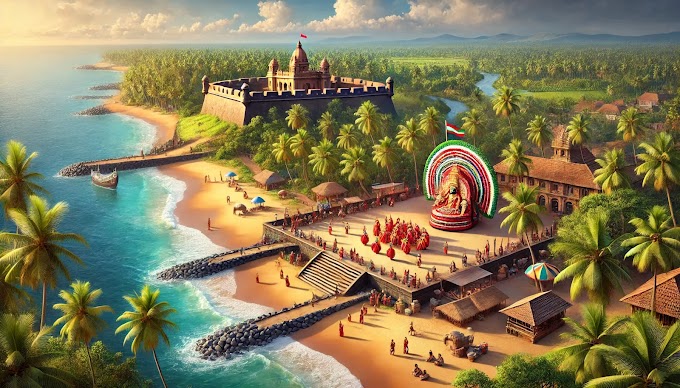Safdarjung Tomb Guide
 |
Discover the History, Architecture, and Best Time to Visit Safdarjung Tomb
Where is Safdarjung Tomb
The Safdarjung Tomb, located in New Delhi, is one of the last monumental tombs built in the Mughal architectural style. Constructed in 1754, it serves as the mausoleum of Safdarjung, the powerful prime minister of the Mughal Empire under Emperor Ahmad Shah Bahadur. Known for its grandeur and intricate designs, the Safdarjung Tomb stands as a symbol of the fading glory of the Mughal Empire. Visitors can explore its beautiful gardens, domes, and intricate marble structures, making it a must-visit for history enthusiasts and architecture lovers.
Safdarjung Tomb Was built by:
Safdarjung, originally named Mirza Muqim Abul Mansur Khan, was appointed as the Subadar (governor) of Oudh (modern-day Ayodhya) before becoming the prime minister under Mughal Emperor Ahmad Shah Bahadur. After he died in 1754, his son, Shuja-ud-Daula, commissioned the construction of the tomb, which was designed by an unknown architect. Safdarjung’s tomb was the last of the grand Mughal mausoleums and is often referred to as the fading light of Mughal architecture.
Safdarjung Tomb Review
Safdarjung Tomb is a fine example of late Mughal architecture, showcasing the influence of earlier tombs such as the Humayun’s Tomb and the Taj Mahal. The mausoleum is built primarily from red sandstone and marble, with intricate inlays and a stunning central dome. The tomb stands in the center of a Charbagh (four-part garden), a traditional Mughal-style garden with walkways and water channels.
The main mausoleum has an imposing dome, flanked by four minarets, and its arched entrances are adorned with detailed latticework. The garden complex surrounding the tomb is divided into squares, typical of Mughal garden layouts, creating a peaceful environment for visitors to enjoy.
Must-See Attractions Inside Safdarjung Tomb:
- Main Tomb Structure: The central dome and the tomb chamber, are surrounded by intricately designed walls and arches.
- Charbagh Garden: The lush garden that surrounds the tomb, offers a peaceful place to explore and relax.
- Pavilions: The tomb is flanked by small pavilions named Jangli Mahal (Palace in the Woods), Moti Mahal (Pearl Palace), and Badshah Pasand (King’s Favorite), which add to the architectural beauty of the site.
Why You Should Visit Safdarjung Tomb:
Safdarjung Tomb is a peaceful retreat in the heart of Delhi, offering visitors a chance to step back into the Mughal era. The tomb is an excellent spot for photography, thanks to its stunning architecture and beautifully landscaped gardens. Whether you're interested in history, or architecture, or simply looking for a quiet place to escape the bustling city, Safdarjung Tomb is a must-visit destination.
Best Time to Visit Safdarjung Tomb:
The best time to visit Safdarjung Tomb is during the cooler months, from October to March when the weather in Delhi is pleasant for outdoor exploration. Early mornings or late afternoons are ideal for visiting, offering a tranquil environment and softer light for photography.
Visiting Timings and Entry Fees:
- Timings: Safdarjung Tomb is open daily from 7:00 AM to 5:00 PM.
- Entry Fee: ₹25 for Indian citizens, ₹300 for foreign tourists, and free entry for children below 15 years of age.
Safdarjung Tomb Metro Station
- Nearest Metro Station: The closest metro station is Jor Bagh Metro Station on the Yellow Line, just a short walk from the tomb.
- By Road: The tomb is easily accessible via taxis, auto-rickshaws, and public buses.
Nearby Attractions:
- Lodhi Garden: A peaceful park with historical monuments located close to the Safdarjung Tomb.
- India Gate: A famous war memorial and popular tourist spot situated a short distance away.
- Qutub Minar: Another UNESCO World Heritage site and architectural wonder nearby.
Conclusion:
A visit to Safdarjung Tomb offers a serene escape into Delhi’s rich Mughal past. The intricate architecture, peaceful surroundings, and historical significance make it a perfect destination for travelers interested in exploring India’s cultural and architectural heritage. Plan your visit to the Safdarjung Tomb and experience the grandeur of one of the last great Mughal monuments.






